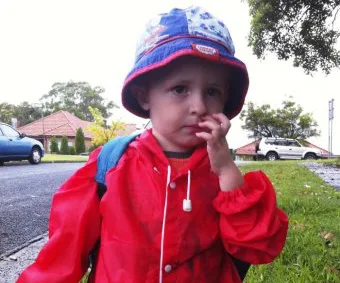A child’s risk of developing the disorder may now able to be determined by a brain scan long before symptoms appear, if the results from this ground-breaking study are anything to go by.
The research, published in the journal Nature, determined with an 81 per cent accuracy rate an overgrowth in brain volume in the first two years of life to be directly indicative of autism.
In a bid to better understand the disorder and how it occurs, the scientists used magnetic resonance imaging (MRI) scans on the brains of 106 high-risk (babies with a diagnosed sibling) and 42 low risk infants at 6, 12 and 24-months.
Of these, 15 were diagnosed with autism at age two – around the same time they began to show symptoms such as not meeting eye-contact, delay or repetition in speech and sensitivity to sound.
But that’s not all. Researchers also found changes in growth to the cortical surface area of the brain between 6 and 12-months, leading to an earlier diagnosis of the disorder long before the appearance of symptoms.
Better Health Australia lists some characteristics of Autism Spectrum Disorder (ASD) to be:
Language – absent, delayed or abnormal patterns
Play – isolated, repetitive, a preference for predictable play, difficulty with flexible thinking
Body movements – behaviour such as flapping and toe walking, and other behaviours that may cause self-injury, such as hand biting
Tantrums – in a bid to express extreme confusion, stress, anxiety, anger and frustration when unable to express their emotions
Sensory sensitivities – to certain sounds, colours, tastes, smells and textures
“It’s the first marker of any sort, brain or behaviour, in infants, to predict which individuals would be classified as autistic at 24 months of age,” said senior author Dr Joseph Piven, a Professor of Psychiatry at the University of North Carolina-Chapel Hill.
“Our study shows that early brain development biomarkers could be very useful in identifying babies at the highest risk for autism before behavioural symptoms emerge,” he continues, adding that more research on a larger scale is yet to be done before we can see such scans make their way into clinics.
“Typically, the earliest an autism diagnosis can be made is between ages two and three, but for babies with older autistic siblings, our imaging approach may help predict during the first year of life which babies are most likely to receive an autism diagnosis at 24 months.”
“If we can target interventions before autism appears and before the brain changes appear, during a time when the brain is highly malleable or plastic, we can have a bigger impact on the outcome,” Piven says, adding that he finds the discovery “very promising”.
For more information on your baby’s health, book an appointment with your trusted GP today.



